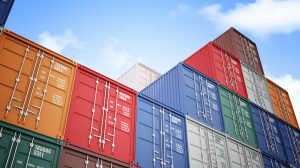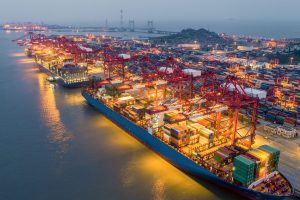Solutions range from underwater robot hoovers to sustainable fuels
International maritime transport is responsible for 90% of global trade. CENTRONAVE member shipowners have been presenting various innovations to accelerate decarbonisation in this global movement, seeking a variety of solutions that go beyond a technological upgrade of engines and new fuels, but include alternative strategies, such as the aid of artificial intelligence, cargo management, and more modern and efficient terminals.
These measures aim to accelerate the decarbonisation of the sector and strengthen shipowners’ commitment to the environment and society, as well as helping to meet the target set by the International Maritime Organisation (IMO) of reducing CO2 emissions by 30% by 2030.
“There are already ships leaving the shipyards powered by methanol, hydrogen, ammonia and gas (LPG). One of our members, for example, is building 12 ships (the first to be delivered in 2025) exclusively powered by methanol,” says Claudio Loureiro de Souza, Executive Director of the National Transatlantic Shipping Centre (CENTRONAVE).
The agreement reached recently in London by the IMO is an advance on the previous one from 2018, in which the countries set a 40 per cent reduction in emissions by 2030 and zero emissions by the end of the century. The effort now aims to accelerate the decarbonisation of international maritime transport by 50 years: a 20% reduction to 30% by 2030 and a 70% reduction to 80% by 2040.
“In the future we will have a new generation of ships with zero or very low CO2 emissions compared to the current fleet,” says Loureiro.
CENTRONAVE brings together 19 global shipowners operating in various forms of maritime transport on the long haul. The members handle around 97 per cent of all Brazilian exports and imports in containers, serve 30 segments of the economy and open up new markets for industry and agribusiness in 170 countries.
The world’s biggest shipowners, such as ONE, HAPAG-LLOYD, MSC and MAERSK, are investing in various solutions such as modernising their current fleet, using intelligent navigation systems, low-emission logistics warehouses, carbon calculators, using “underwater robot hoovers”, new, more economical propellers, and new technologies in alternative, less polluting fuels.
From underwater robot hoovers to propellers – the new front of sustainable innovation
As part of its efforts to decarbonise maritime transport, MSC has started using revolutionary new sustainable solutions on its container ships, such as the “underwater hoover robot” to clean the hulls frequently, which helps to reduce CO² emissions by up to 20%. By keeping the ships’ hulls clean, the engines operate at lower load and save fuel. And with the entry into operation of new vessels since 2019, such as the M/V MSC Gülsün, the company is also setting new benchmarks for sustainable container transport, with one of the lowest carbon footprints for moving a tonne of cargo per nautical mile.
ONE, for its part, has successfully tested “Sustainable Biofuel for Decarbonisation”. The tests have been carried out in collaboration with another CENTRONAVE member shipowner, Mitsui O.S.K. Lines, and with the pioneer and world leader in sustainable biofuels, GoodFuels. Sustainable biofuels do not emit sulphur oxide and provide an 80% to 90% reduction in CO2 emissions compared to fossil fuels. They also do not require modifications to the engines or infrastructure of current ships.
With regard to green fuels, in another example, MAERSK is creating a very advanced structure for the use of green methanol as a marine fuel, and on a global scale. To increase global production capacity for green methanol, MAERSK recently entered into strategic partnerships with six leading companies, with the intention of supplying at least 730,000 tonnes/year by the end of 2025. This will fulfil the methanol requirement for the first 12 green container ships already on order. The company also announced the construction in Denmark of its first “green logistics warehouse” with low greenhouse gas emissions.
Hapag-Lloyd has also launched Ship Green, a new transport solution based on biofuels to reduce CO2 emissions. With the solution, customers can choose between three different options, which represent different levels of carbon dioxide equivalent emission prevention: 100 per cent, 50 per cent or 25 per cent. By offering Ship Green, Hapag-Lloyd continues on the path to achieving climate-neutral fleet operations by 2045.
These are just a few examples. Currently, global maritime transport accounts for up to 3 per cent of global CO2 emissions. Even so, the shipping industry is already committed to sustainable innovations and solutions throughout its logistics chain and is making great strides to reduce greenhouse gas emissions. Despite the many challenges to be overcome in the maritime and logistics sectors, shipowners continue to invest in constant improvements and innovative technologies towards zero emissions in the future.
About CENTRONAVE
The National Centre for Transatlantic Navigation is a non-profit association founded in 1907, which currently brings together 19 global shipowners, among the largest in the world, operating in various types of maritime transport on the Long Haul, including bulk, general cargo, project cargo, forest products, roll-on-roll-off and containers, a segment in which it handles around 97% of export and import cargo in Brazilian foreign trade.




